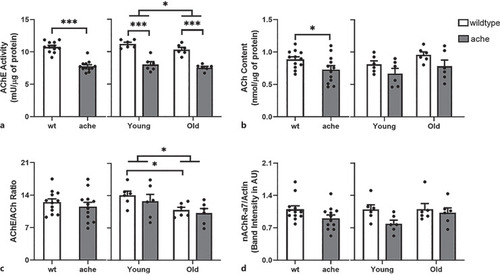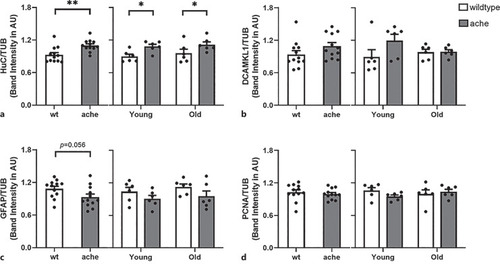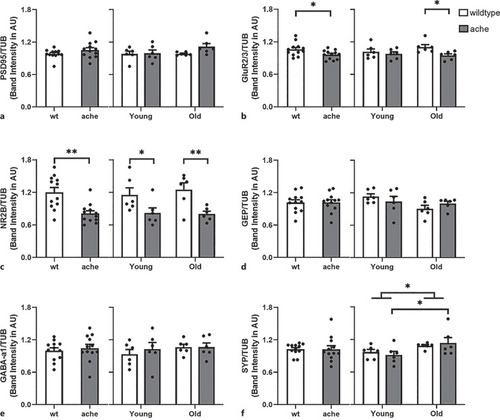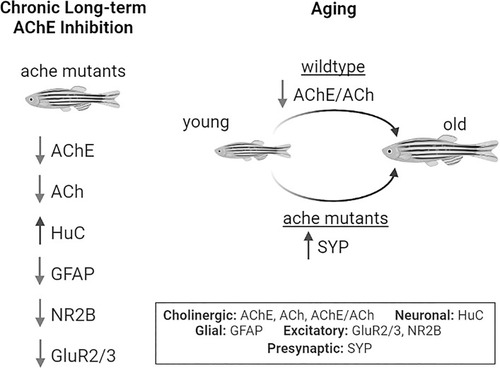- Title
-
Long-term Acetylcholinesterase Depletion Alters the Levels of Key Synaptic Proteins while Maintaining Neuronal Markers in the Aging Zebrafish (Danio rerio) Brain
- Authors
- Karoglu-Eravsar, E.T., Tuz-Sasik, M.U., Karaduman, A., Keskus, A.G., Arslan-Ergul, A., Konu, O., Kafaligonul, H., Adams, M.M.
- Source
- Full text @ Gerontology
|
A comparison in the brain levels of cholinergic transmission components between genotype and age groups. |
|
Representative Western blot images for cellular, synaptic, and inflammatory proteins that were used in the current study to examine the effects of genotype and age. All antibodies gave bands at their expected molecular weights. |
|
Relative levels of neuronal, glial, and proliferation markers between genotype and age groups. |
|
Relative levels of synaptic protein between genotype and age groups. |
|
Alterations in the levels of inflammatory and oxidative stress markers. |
|
Summary figure indicating alterations in response to long-term reduction of AChE activity and aging. Overall, brain levels of AChE activity and ACh content decrease significantly in the ache mutants. On the other hand, mutants as compared to wildtype controls are characterized by elevated levels of the immature neuronal marker, HuC, and reduced levels of the glial marker, GFAP, as well as excitatory synaptic proteins GluR2/3 and NR2B. In wildtype animals, the cholinergic ratio AChE/ACh declines with increasing age, while this index is stable in the mutants across the lifespan. Additionally, with aging, the levels of presynaptic protein SYP are elevated in the ache zebrafish. The figure was created with BioRender. |






